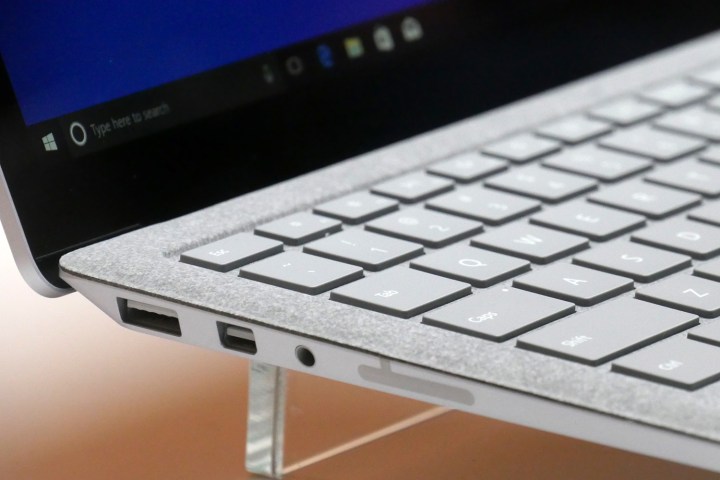
Just to be perfectly clear, the size of a USB port has nothing to do with the speed of data transfer but rather defines the physical connection. We have come to know and love the rectangular Type-A port over the decades, which relies on a one-side-up-only connection. Type-C uses a smaller rectangular port and a two-sided, fully-reversible connector so that there is no one-side-must-be-up connection.
While Type-C is more convenient for the user and takes up less space, manufacturers have muddied the Type-C waters with the talk of speed. Based on advertisement and a lack of information in hardware specs, customers are sometimes led to believe that Type-C is the fastest USB tech on the market and that is necessarily not the case.
After USB 2.0 dominated our devices for some time, USB 3.0 arrived sporting a blue Type-A port and a faster 5Gbps speed compared to 2.0’s 480Mbps. The color coding was meant to distinguish the USB 3.0 port from the USB 2.0 port so that users would know which one to use for peripherals that required faster transfer speeds.
But when the conglomerate that manages the USB standard revised the USB 3.0 spec to support 10Gbps transfers, it changed the name of the older 5Gbps connection to USB 3.1 Gen1 and the newer, faster connection to USB 3.1 Gen2. On the visual end, blue still defines the older 5Gbps connection (formerly USB 3.0) while the new tech uses red.
But then the Type-C port began appearing on smartphones and notebooks. Seemingly inspired by Apple’s Lightning connectivity, the fully reversible Type-C port makes total sense when it comes to thin and light solutions, and manufacturers ran with the idea of implementing the technology just a few years ago. As of 2017, Type-C is one of the most promoted features on desktops and laptops.
So when Microsoft revealed the Surface Laptop without a Type-C port, many began to question why. But look at the specs: It provides only one Type-A USB port (Gen1). Microsoft wanted to make sure that users, especially students given that the Surface Laptop is an education-themed device, did not run into compatibility issues with standard peripherals.
According to one Microsoft designer, the Type-C port has not fully matured, as there are reportedly still issues regarding power and cabling. Plus, the port has yet to fully saturate the non-Apple laptop market. Thus by using Type-A, students can plug in their existing mouse or other peripheral and continue without having to worry about getting a new peripheral or a Type-A to Type-C adapter.
The Surface Laptop will ship on June 15 in four configurations, as shown below:
| Price: | $999 | $1,299 | $1,599 | $2,199 |
| Intel CPU: | Core i5-7200U | Core i5-7200U | Core i7-7660U | Core i7-7660U |
| Intel graphics: | HD 620 | HD 620 | Iris Plus 640 | Iris Plus 640 |
| Memory: | 4GB | 8GB | 8GB | 16GB |
| Storage: | 128GB | 256GB | 256GB | 512GB |


